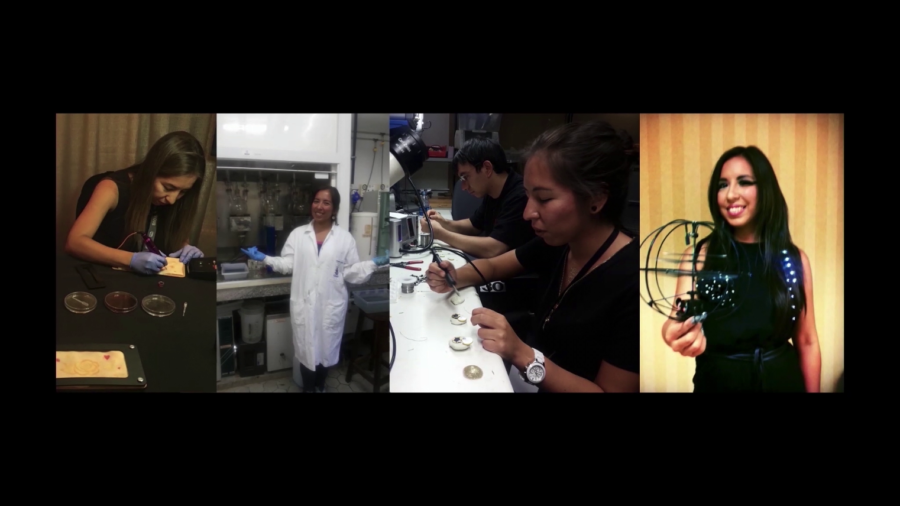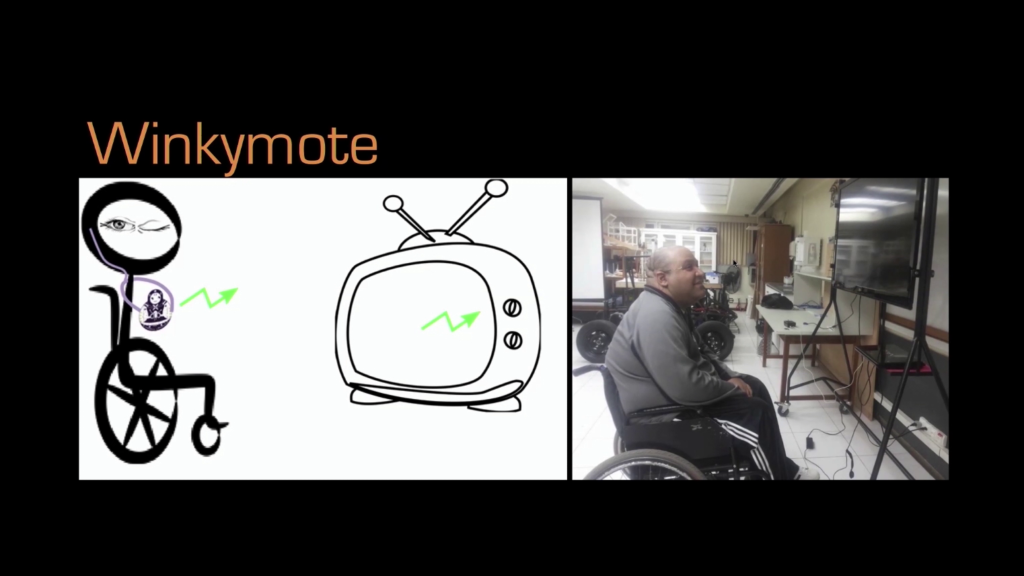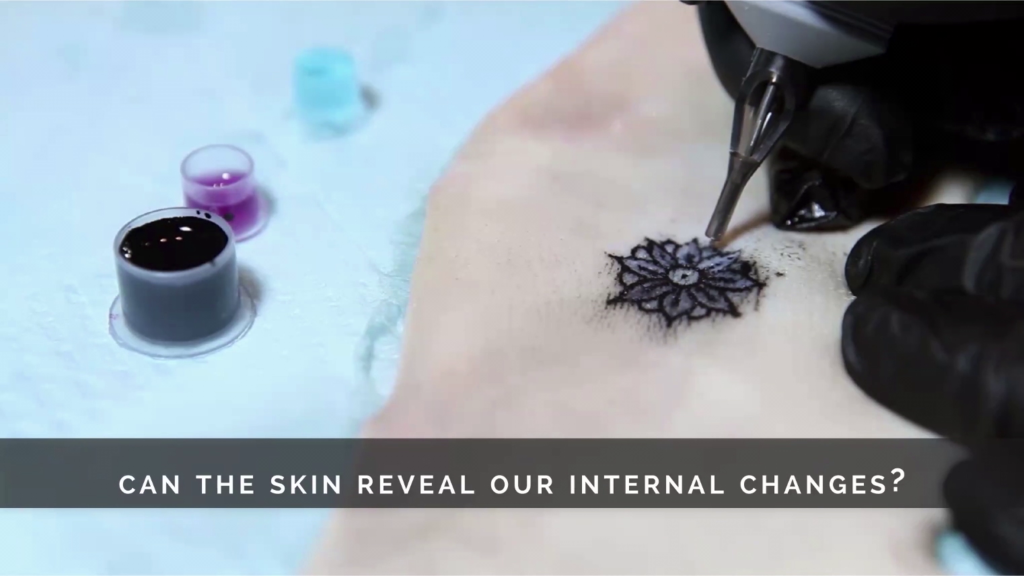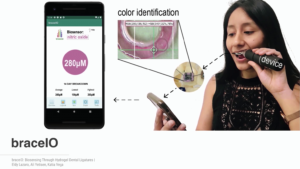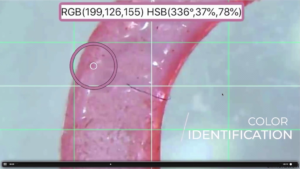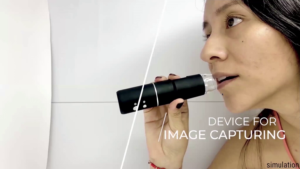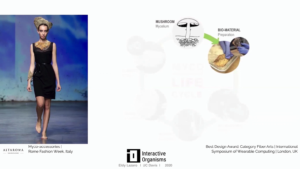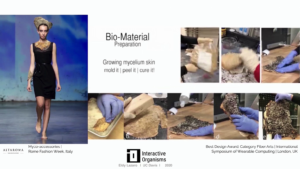Golan Levin: And welcome back to the Saturday afternoon session of Art && Code: Homemade, our festival about digital tools and crafty approaches. This is our afternoon session on our final day. We have one session after this in the evening. But for the afternoon session we’re going to have four presenters: Katia Vega, Jorvon Moss, Tatyana Mustakos, and Daniela Rosner. We’re going to begin with Katia Vega. And if you’re just tuning in and would like to be part of the chats, go to artandcode.com/homemade to register and you’ll be able to be a part of the Discord where we’re having our conversations and chats about the speakers and their work.
Katia Vega is a professor at the Department of Design at the University of California, Davis, where she directs the Interactive Organisms Lab. Her laboratory needs new explorations in novel interfaces in areas such as beauty technology, body modification technologies, and growable interfaces. She’s also the author of Beauty Technology: Designing Seamless Interfaces for Wearable Computing. Katia Vega.
Katia Vega: Hello everyone. I’m super excited to be here and to be part of this great festival and share also some of my passions, some of my research projects. And I will be talking a little bit more of what I was creating in the last maybe ten years, and also kind of like behind the scenes of what I was creating, too. So I’m super excited to share what I was doing with you guys.
So first, while talking with the organizers I was thinking on what would be the most interesting thing to share, and how to go even beyond the traditional way that I present my work. And one of the recommendations was to talk a little bit more about your passion and about yourself. And so like oh yes, of course. I can talk about my favorite topic, myself. And I am excited to talk about what drives my creation. And in that way you will see different fields merging together, and fields that maybe I wasn’t expecting to be exploring from before.
A little bit of my background. I studied computer science. I am from Peru. And when I finished my career, and maybe I don’t know if that happened to you at some point or if you are as studying and you didn’t know how to move forward, I was in that situation. I didn’t know what to do next. And unfortunately in Peru there are not too many research labs, at least in HCI, in computer science. And actually that’s kind of a very privileged [indistinct] from other countries. And I didn’t even know that being a researcher was a career. I was just like…do you actually get paid for creating, and to be a researcher. That wasn’t something that was very common in my environment.
But I was very fortunate to talk with someone that was a researcher. A Peruvian researcher. And he said yes, you go apply to scholarships and study a Masters degree or a PhD degree, and become a researcher. And that’s what I did. I went to Brazil. I did my Master’s degree. It was more about virtual worlds. And then I moved into creating other devices. I started learning about wearable devices. And I started my PhD around that topic. And I was very fortunate to move to Hong Kong for one year. I was over there in an arts department that was very different from any of my colleagues that were going to computer science labs all over the world.
And then I started thinking about how we in computer science create. And we usually create maybe just solving a specific problem. And when I was in art I was thinking like okay, what’s the problem? What’s the solution? What are you creating? And they were expressing more their passion.
So that’s kind of— I will show you some projects that show that current passion and the passion I had also at that time. And I think art gave me the possibility to express this futuristic technology and make it more available for other people to think about not just a prototype on some paper or something that you cannot see, but you could actually see and touch and make in performances and all that.
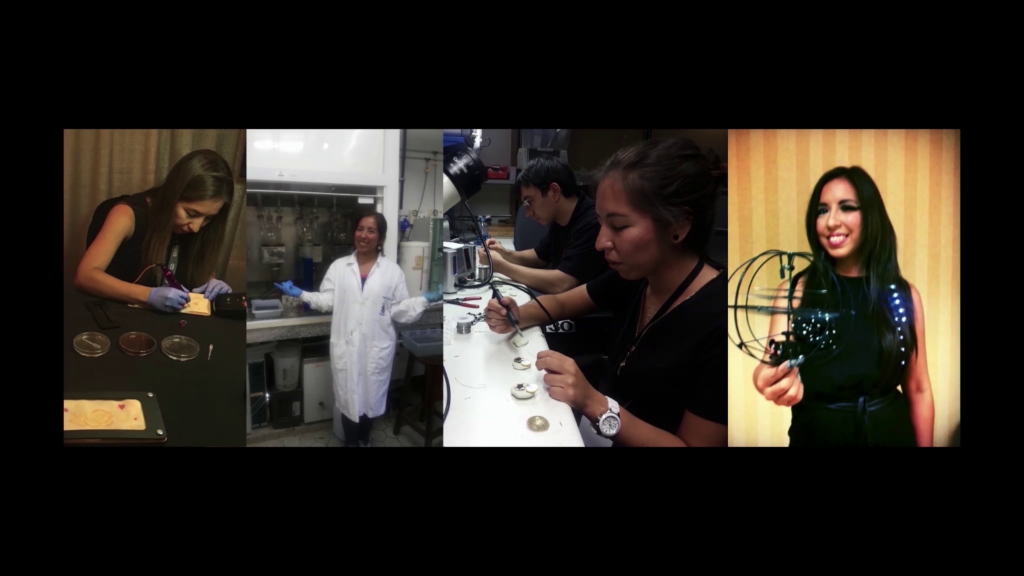
So I will show you a little bit about that, my journey. I put some pictures of me over here. And you can see that I was very involved in learning about the tools, and using a tattoo gun. It was kind of an amazing experience because it has a motor, it moves, and you have that feeling. But also I was using biosensors, biotechnology, things that change color. And that was a very different for me. I was going to chemical labs to try to metalize different components. And even though I was a computer scientist, which usually don’t wear these white coats. And I had that experience to become a “scientist” using that the white coat and going to the lab and creating kind of like a recipe through chemistry and also creating different kinds of objects.
I was introduced also to electronic and circuits. And I mixed all that together for not just creating all this research and papers and projects, as I mentioned, but also art exhibitions to showcase what I was feeling.

And in this idea of what I was feeling, I was always thinking about, and I continue thinking about, this question: what is the meaning of your skin? And I’m sure if I ask you this question you will come up with different ideas. The protection layer of your body, or the skin’s kind of also a sensor. You could touch and know if something’s too cold, too hot, and the texture of the object. And you could also think about if something is too soft— You could understand your environment just by touching it.
And your skin, and that’s what I want to talk to you about today, is also a way that we express ourselves. We express ourselves in many ways. We modify our body, we modify our skin, our skin can be a canvas that we could be representing different ways that we want to be seen.
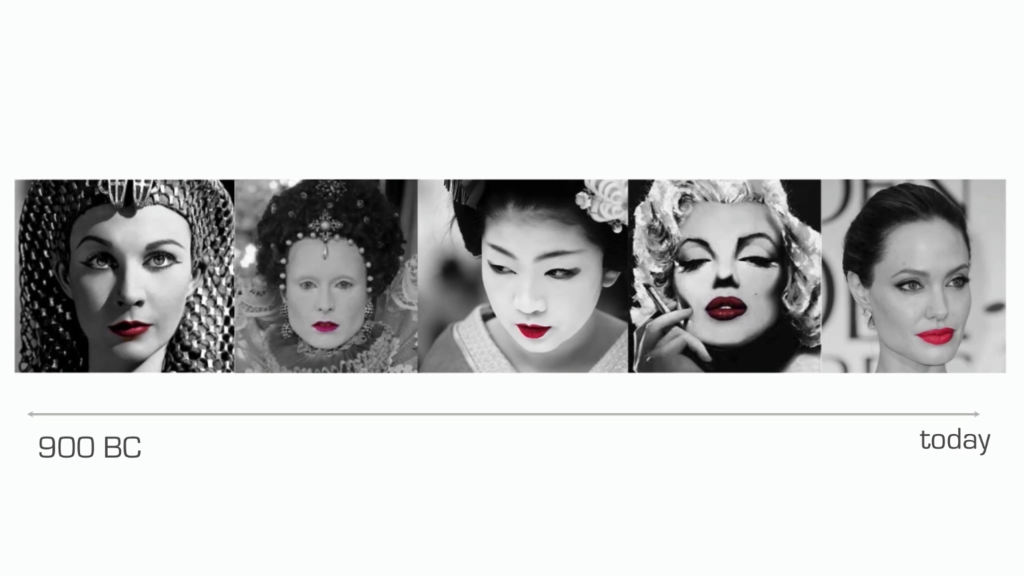
And in that way I want to talk about cosmetics. And if you think about cosmetics over time, they didn’t change very much. So even right now I have a red lipstick. My mom has a red lipstick. My grandmother has a red lipstick. The functionality of the cosmetics didn’t change that much. So I was thinking if we are already using this product for highlighting or hiding some of our appearance, how could we embed technology?
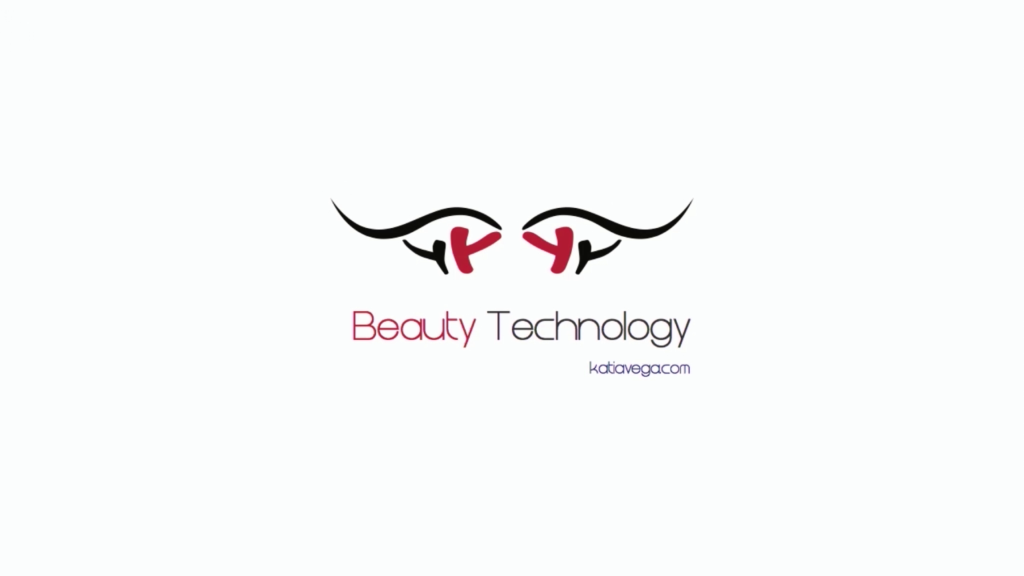
So I created this concept called beauty technology. This was actually my PhD project. I was using cosmetics or beauty products and embedding circuits into them. So our skin, this two meters square of skin that we have, it could be an interactive platform.
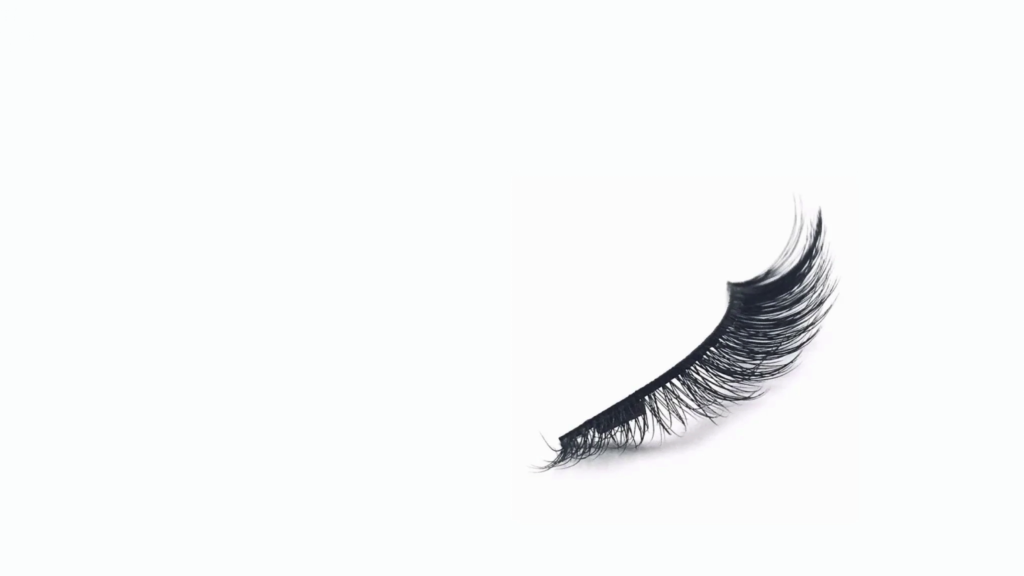
I was thinking for a long time what could be a good way to introduce to you guys these concepts and these ideas. And one of my main motivations on the projects that you will be seeing is how to make my prototypes invisible. How to make an eyelash that could become a circuit to look like an eyelash. And if you see in my video, I’m holding an eyelash right now. And this is a conductive eyelash. But you see over the camera, and maybe if you see it in person in some other opportunity, you could check that it looks like a normal fake eyelash, the one that you could buy in a drug store. So I will show you some of how I created this prototype, and how to make them to be seamless so you could still be yourself but wearing technology.
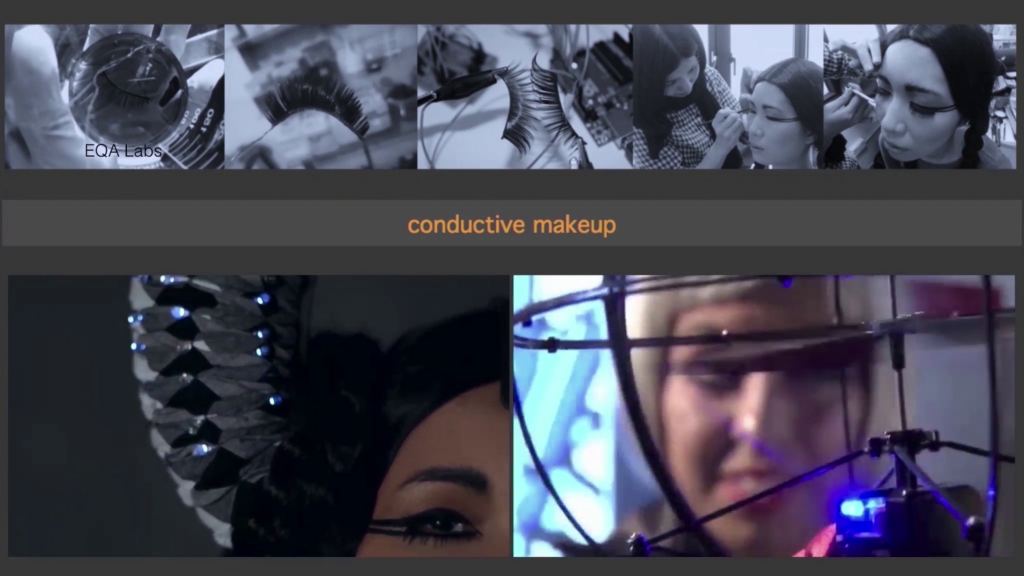
So you can see over here these prototypes. I call it conductive makeup. I was again wearing this white coat and going to a chemistry lab and using all these different materials. So I was able to create these eyelashes that now are conductive. I worked a lot with artists for these first projects that you will see over here. In this first video you can see that we apply these eyelashes one on the top of the eyelid, the other one on the bottom part of the eyelid. And it works like a switch. When she blinks, the different light patterns turn on and off.
And for me it was very exciting. You can see over here on the right side. This is me also wearing these eyelashes. I was a superhero and just by blinking I was able to turn on this drone and make it fly. And like in my free time I’m a superhero, and just by blinking I can make things levitate.
And again, I try to make things invisible. Conductive materials that could be embedded into makeup. And you could have these micromovements that we have, like blinking, but now we could interact with our world.
Other ways I was working on this kind of project, I was working with Felipe. Felipe was a six-time champion in jiu-jitsu. And unfortunately during a training…now he cannot move his body. So instead of being a superhero for controlling a drone he wanted to control the TV and have that independence. And inspired by Felipe, I created this other project I will be showing to you. And this project, I call it Kinisi. That means “movement” in Greek. It is an art project that I exhibit in different places, and I work with different video professionals to show this possibility that your skin could be an interface. And you’ll see in the video how different light patterns turn on just blinking, raising an eyebrow, smiling, and closing the lips.
https://www.youtube.com/watch?v=7JrRo1U7c5o
And of course our body is also our hair. So I was working with hair extensions in a very similar way with the eyelashes. So metalizing them with a chemical process. And the chemicals I was using I was actually using them to look like my hair, kind of brown. And connecting that fake eyelash that now is conducted but looks like hair to a microcontroller, I could send that information to a device. And in this you could think of recording a conversations, sending a message, or imagine if you’re in a risky situation and you can’t take out your phone, you could send your location to the police, for example.
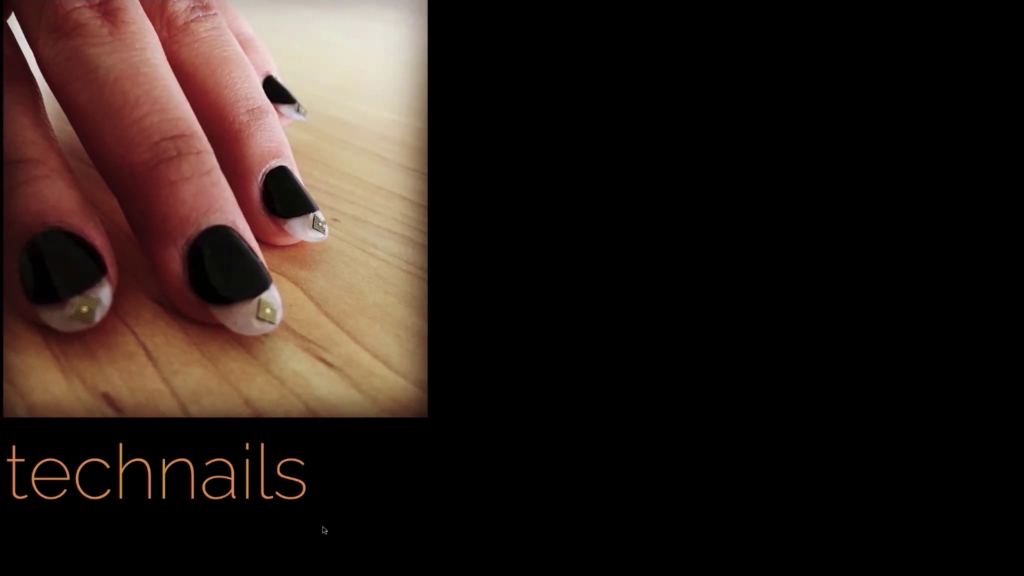
Our body’s also our nails. And I created this other project called Tech Nails that embed a small chip inside of the fingernails. And my main motivation also was to interact with devices with these RFIDs. And if you think about for example when you want to pay the metro, you need all these cards so you have to touch that or approximate your card to that reader to know who you are so you can go and pay the metro. So imagine all of these RFIDs we would have in our fingertips, so each of our fingers could be one for paying the metro, another one for paying Starbucks, another one for opening the door of your office.
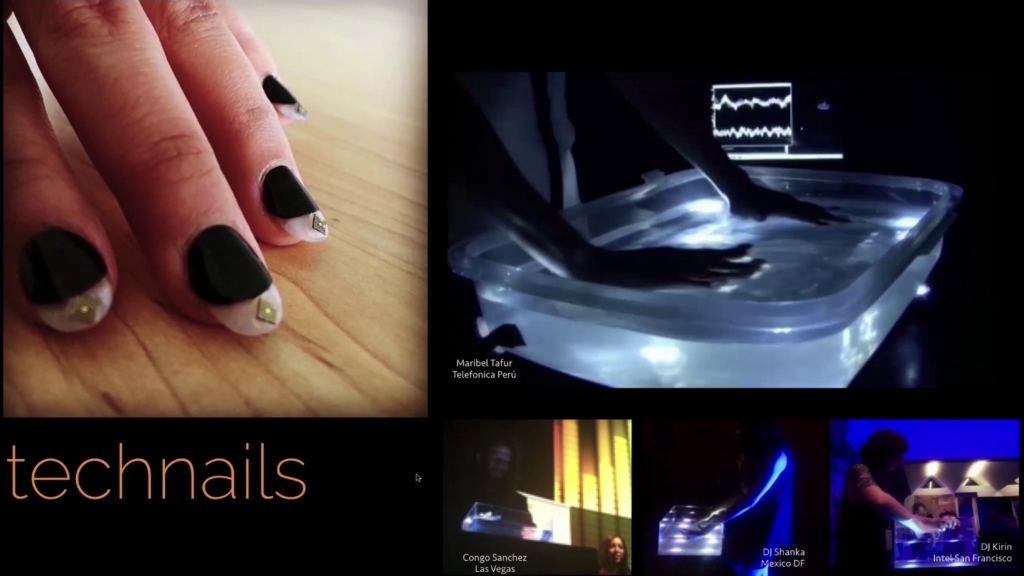
And one thing I was interested in— This device, you don’t need to touch anything for [indistinct] the interaction.
https://www.youtube.com/watch?v=HliI8SGBc2U
So I created this AquaDjing project. A DJ controller in water. So the DJ puts her fingernails into the water, changes tracks, and adds sound effects.
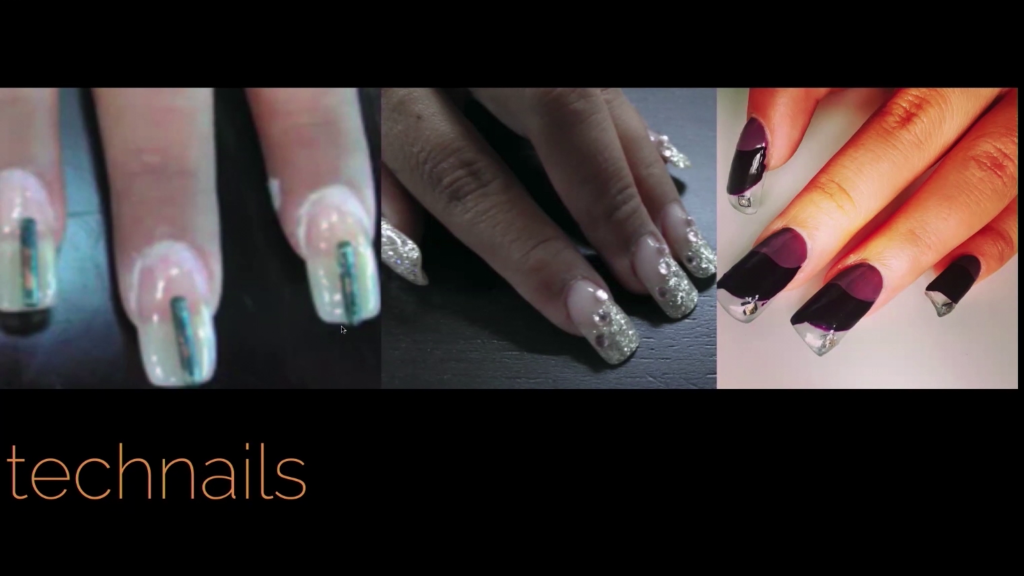
And just for showing you also how I do create, I use traditional beauty products. Like for example you can see over here, my fingernails, that I was even going to a salon, using gel nails, fake nails, and embedding these microchips or these RFIDs in that nail. You can see this is my very first prototype, the very first time I did it. My nails look very bulky and big. But then I started to do smaller and smaller, and also going through this passion to have more seamless devices.
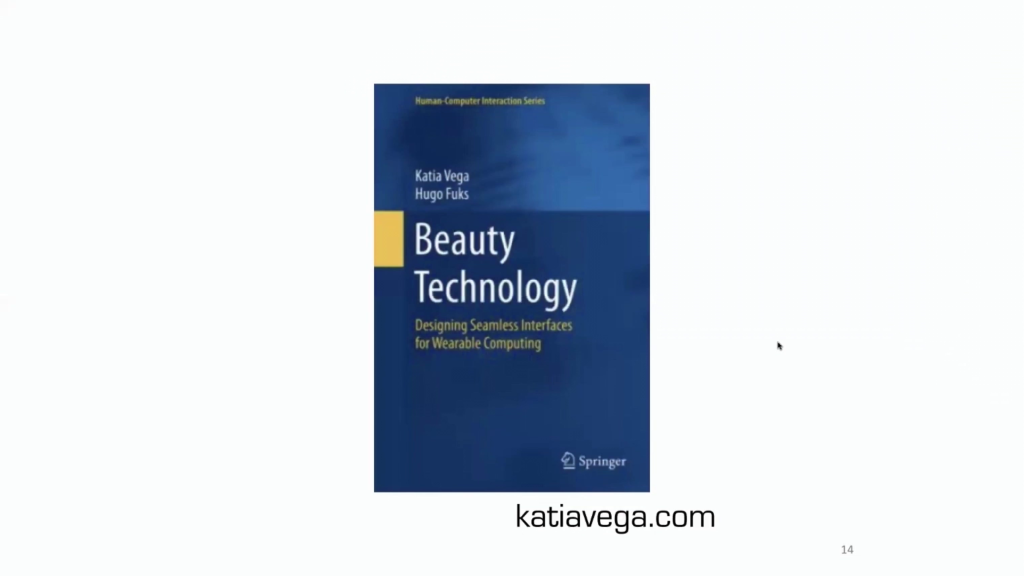
Again we share all these concepts in the designing seamless interfaces for wearable computing Beauty Technology book.
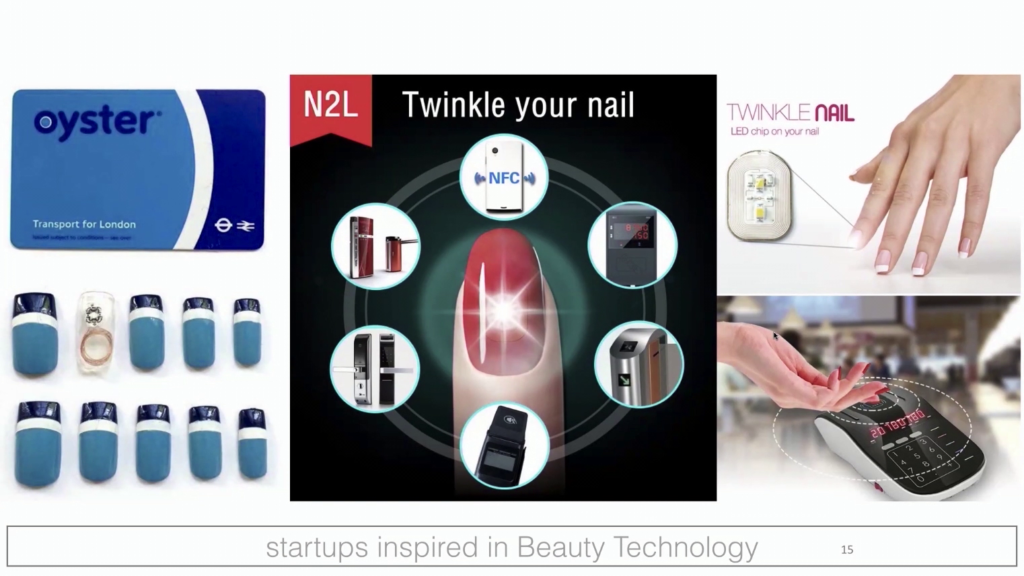
And one thing I notice is that the right you can see some startups that are trying to do this idea of the fingernails for paying the metro in London, in China, in Hong Kong.
I already shared with you how we could have an interactive body. An interactive body through cosmetics like makeup where you blink and turn on the lights. Or fingernails that you could pay the metro with your fingernail. Or just by touching your hair you send a message to the police. So your body could become an interface in that way.
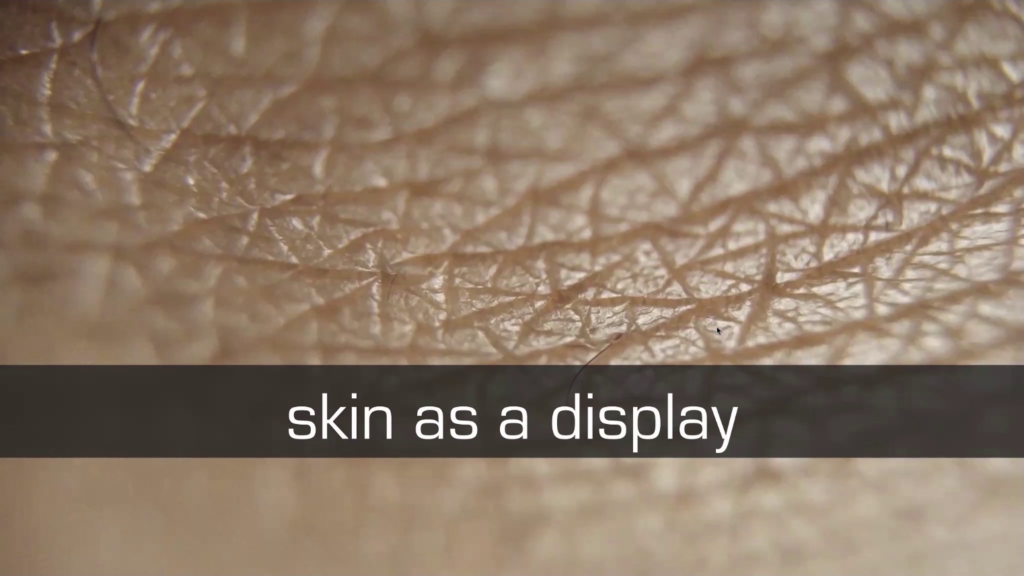
But then I was interested in kinda like maybe going deeper into the skin and making kind of a deeper connection, and to read information that you usually don’t have access to. If you think about the skin as we go back to my first question, the skin could also be a display. And you could think about that when you get nervous or when something is going on to your body, you could get red, you could have acne. Your skin itself is giving information for you maybe taking action, or even some kind of psychological or physical behaviors could be exposed in your skin.
So I was thinking about tattoos. And this is a collaboration project when I was a post-doc at MIT Media Lab. And we were thinking of a collaboration with Harvard Medical School. And we were thinking about the skin and how we could reveal information that you usually don’t have access to. Instead of making a blood test, it could be a tool that we could replace these inks, traditional inks, with biosensors and they change color and react and give information from your body. So you could think about for example glucose levels for people that have diabetes, it goes up and down. So you could see your tattoo could be changing and giving you that information when you will need more insulin.
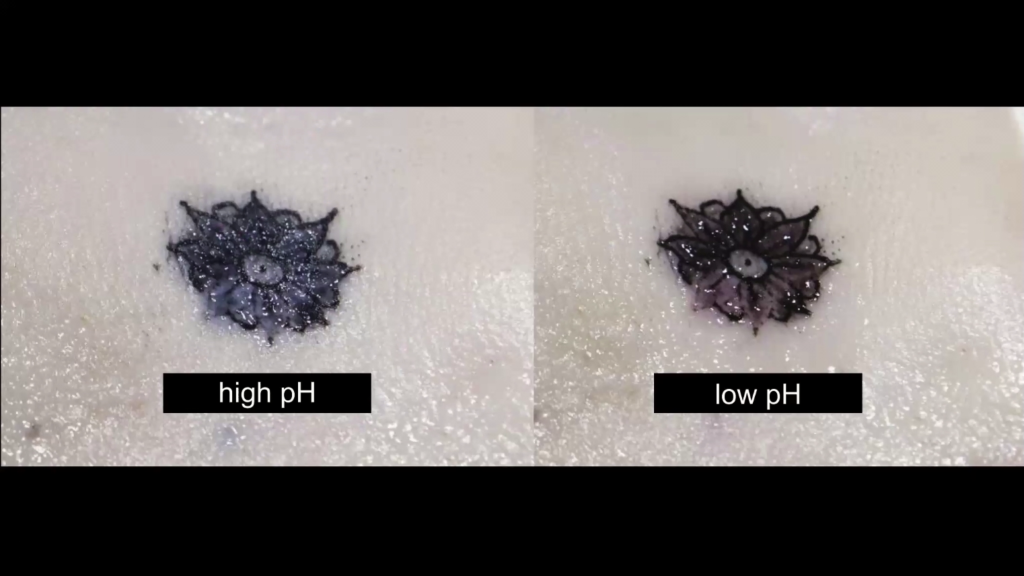
We’re doing some prototypes that showcase that idea. And we were also using different biosensors for pH, glucose, sodium.
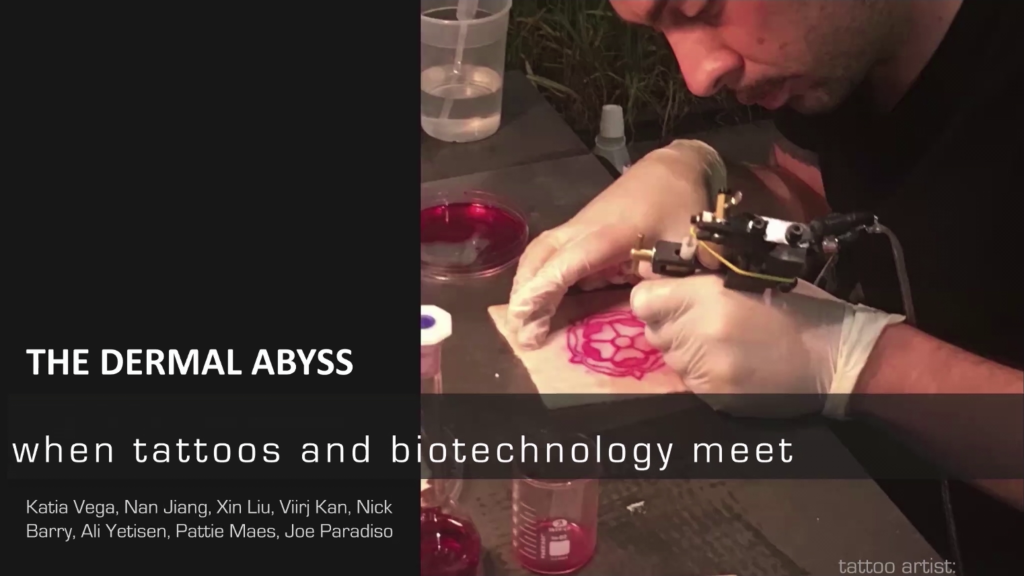
And of course I cannot do a tattoo right now for you guys. We’re also working with tattoo artists because they know about the skin, they know about design and our own canvas that is our skin. So that connection with the artist itself gives us that possibility, but we were showing that as a proof of concept of a futuristic idea that hopefully— Right now, actually, there are more biotech labs working on proving that those biosensors [indistinct] using that as tattoos.
Similar to that, I’m thinking about okay, how could we have a deeper connection to our body. We could also think about these dental ligatures that go around these braces. And we developed them with hydrogel and also biosensors so they are interacting with your own saliva. So you could think about a device, and when it goes closer to that ligature, you could identify by the color of it. And then you will save that as a history on your phone. We were working with biosensors for nitric oxide, pH, uric acid. And this will also give you a lot of information about your body.
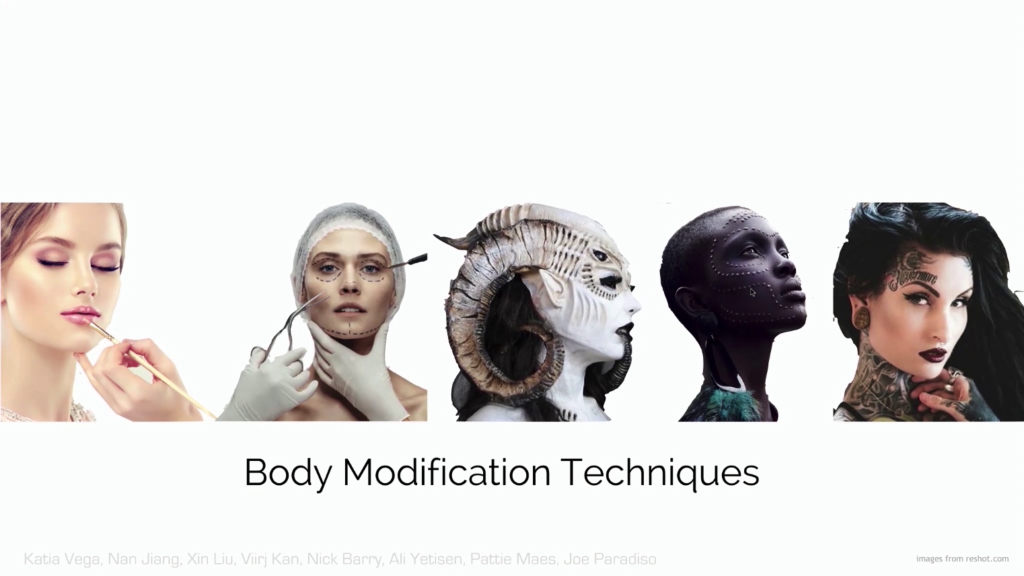
And for me all this passion that I’m talking is a way that we modify the body. And you could think about makeup, and we could think about plastic surgeries, scarification, tattoos. And I didn’t invent these different body modification techniques. I use them and embed technology into them so we could have a deeper connection to our body and understand ourselves more, but also communicating more information.

Is the connection between wearable technology— Our body fluids. Like you could think about tears, when you sweat, your saliva, your interstitial fluids, and how those fluids could be connected with material design and also biotech.
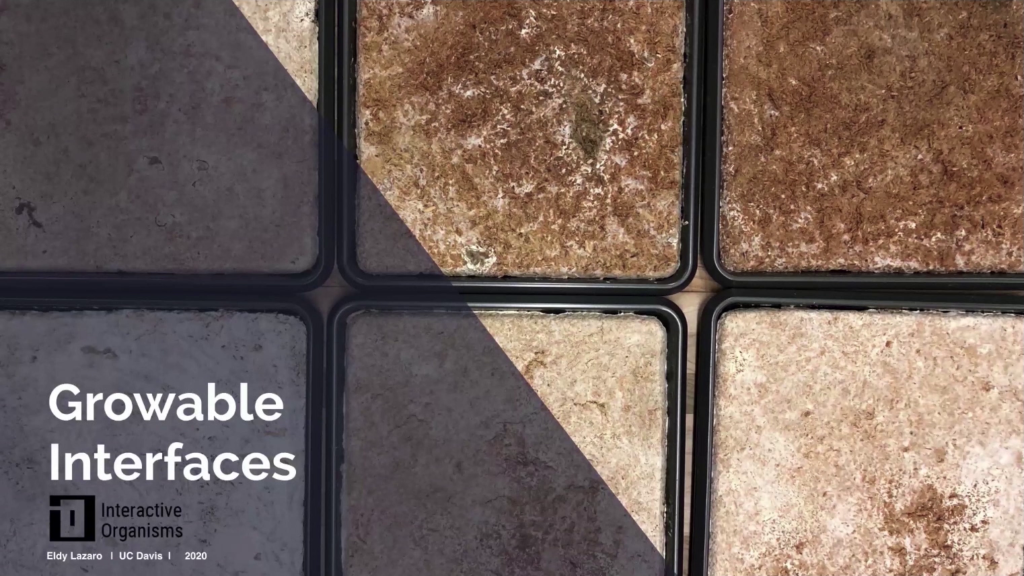
And just finally I want to mention something that is also interesting from my lab that Eldy Lazaro, my student, was working on that is growable interfaces. So if you think about, as designers we have a problem. We create all these devices. And then we put that on a shelf, or maybe we just put that in a landfill. And we are not very conscious of what our role in creation, but also if we are creating products that could be used sustainably.
So she created these ideas called growable interfaces. So by using mycelium that is heat-resistant, water-resistant, you could embed electronics into them. In this case she was preparing that as a small layer, a very thin layer, so it could be flexible too. And we could put electronics around that and we could create these wearables.
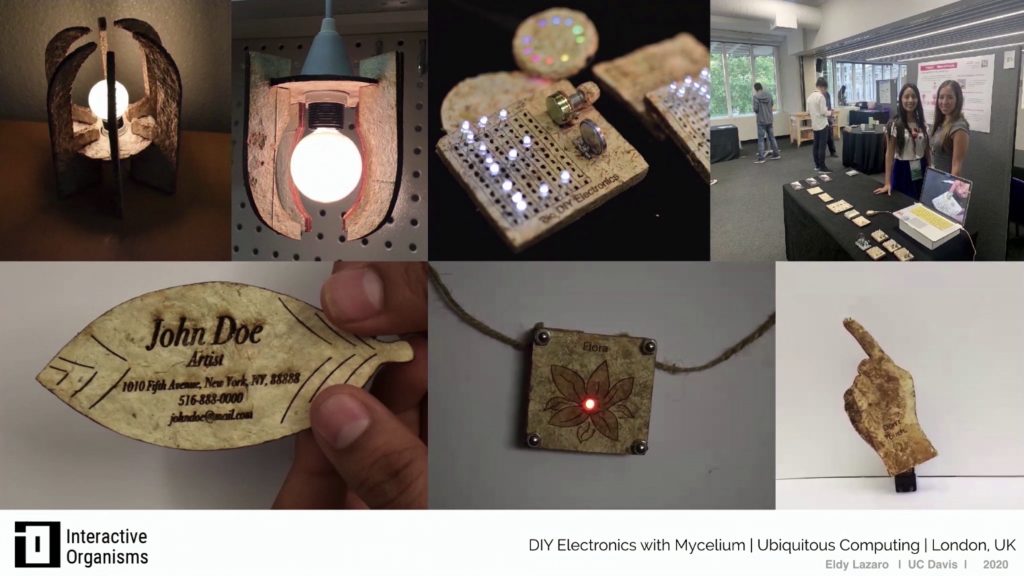
And not just wearable devices like that, but other interactive objects. And then you could imagine all the objects that you even have right now in your labs, what happens with that device if you reuse for example the electronics. You could take out your Flora or your Arduino and just compost the material.
So this is what I wanted to share with you guys, is this whole idea of thinking about our different kinds of organisms that we could see. Thinking about your body and yourself, how your fluids are interacting and also changing all the time in response to your metabolism And I want you to kind of move further from just thinking about maybe a bottle or a switch, but as your whole self that could be interacting and changing its behavior. And you could see it, or you could kind of express it in a different way.
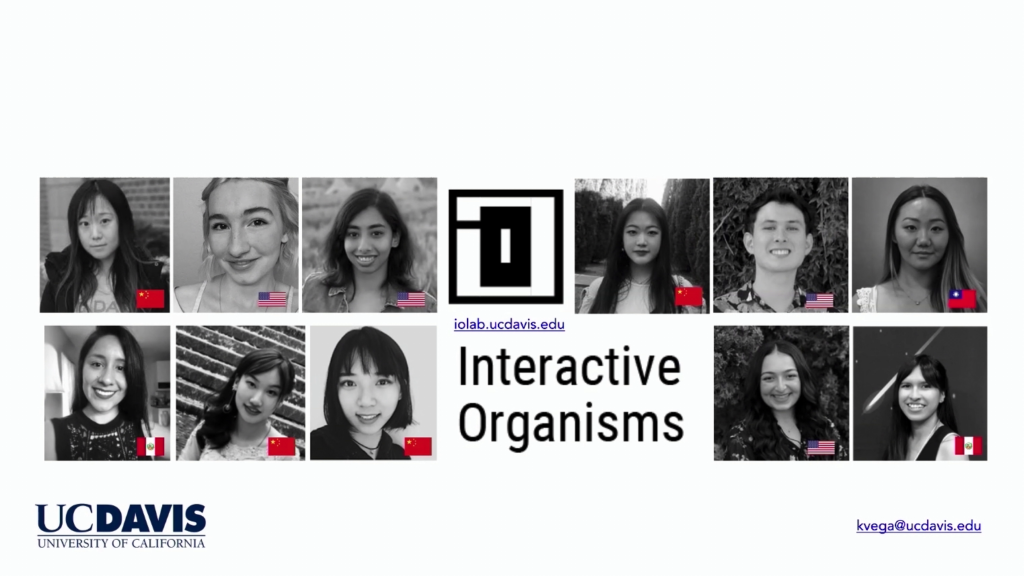
I just wanna thank my lab. I’m very happy that they are students that come from all over the world, but also I’m very happy to have women in technology that are interested in this topic. We have some applications open in the MFA if you also wanted to apply. You could also write me an email.
And yes, this is what I wanted to share with you. Thank you so much, and please if you have any questions just put that in Discord. I will go back and check them. And yeah, so Golan if you also have any questions.
Golan Levin: Yeah, we’ve got a lot, Katia. You have a bunch of fans. There’s a lot of really great responses in Discord. And we have maybe three minutes or so, so I wanna kind of hit some questions with you. One question comes from Kate Hartman, who asks, “You’re work in beauty technology is beautiful. Is the use of the term ‘beauty’ for you meant more to refer to the cosmetic aspects and sort of the cultural slot, or rather to the finesse of the wearing and integration techniques that are employed?” And also she says, “Have you developed any ideas for ugly technology?”
Katia Vega: That’s fantastic. Yeah, so when I was coming up with the name I actually was thinking more of the product itself. For me it was…like, usually woman themselves, they are an inspiration for me. Because as I mentioned I was in Hong Kong, and I was looking at how amazing those techniques could be. Like, placing an eyelash in the metro is not a simple task. And going to a salon like every two weeks and spending maybe two or three hours to have these gel nails, it was also kind of like this motivation and this mixture between these fingernails with Hello Kitty and crystals that is kind of like a deeper cultural connection, a deeper connection through the product itself. And if I think about the beauty product itself, yes, for that name I was thinking about that particular product name.
And about ugly technology, I didn’t think about that actually. Like I didn’t know that there’s an ugly technology. I usually think about the way we modify our body and it could be beautiful in many ways. So I’m kind of inspired by many things, even the scarification and as you can see also tattoos, but that’s also a really cool idea. I’ll definitely go deeper into that.
But one one more thing maybe I would like to share about these products. After I was creating them, I noticed that it’s not just for a particular group of people. For example you could think about the tattoos. You could think there is a specific group of population that could be using the tattoos. But, after we released the prototype we had hundreds of emails, mainly from people that have diabetes. And this person that had a two-year-old kid that cannot communicate too much with his parent yet and who would like to have a tattoo to know what’s going on with his kid. Or this other person that his [indistinct] has been forty years of his life pinching himself like ten times a day. And he thinks that having a tattoo could give that possibility. So, I just thought that these products open the possibilities that users users or the audience traditionally has.
